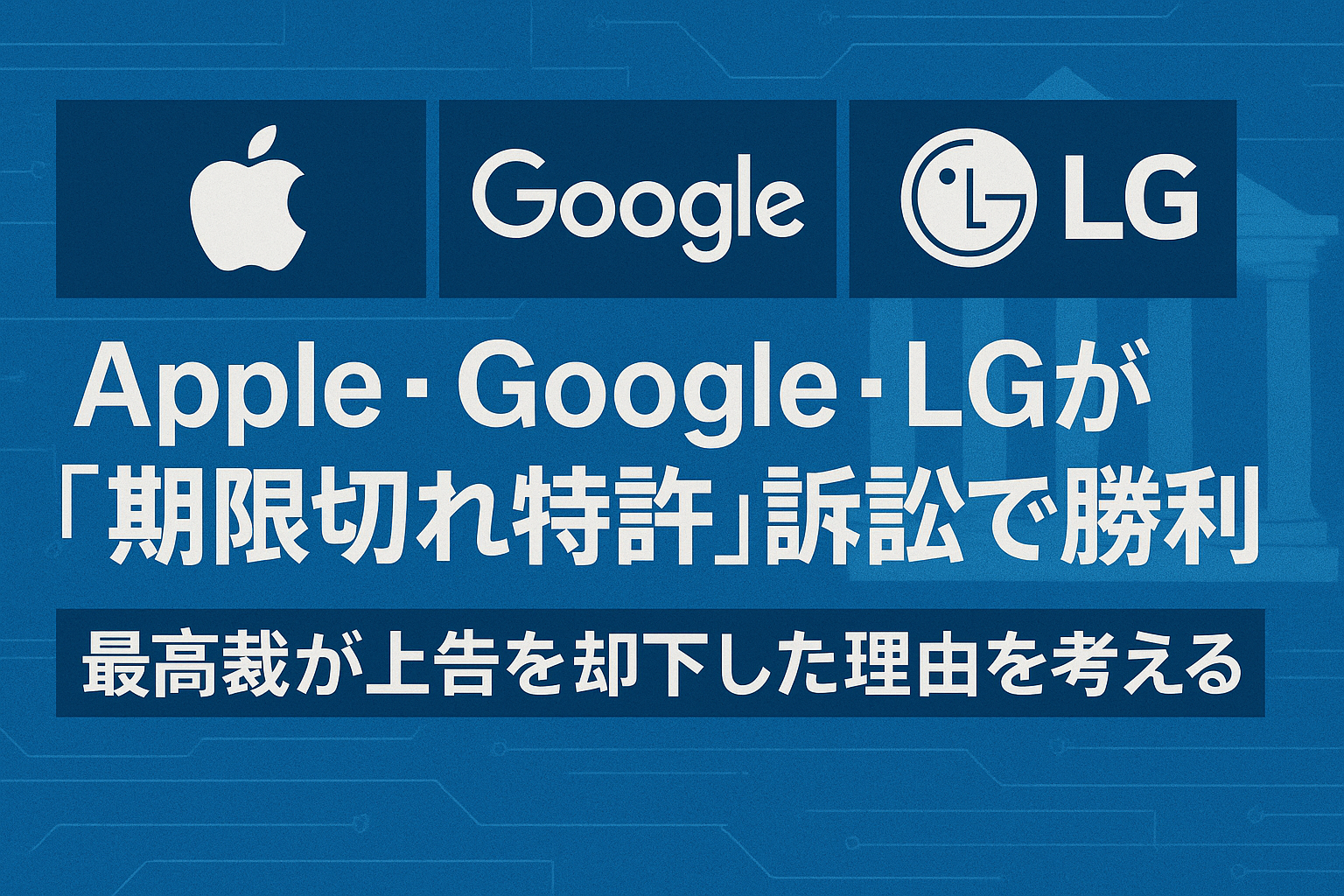In 2025, Apple, Google, and LG secured a final legal victory in litigation over patents related to motion sensors and camera technologies. Although the patents in question had already expired, how they should be “treated” after expiration became the central issue — a rare situation that was debated all the way up to the U.S. Supreme Court.
This article examines the overall dispute and the key points of the patent system underlying the case.
The Core Dispute: How Should Expired Patents Be Handled?
Gesture Technologies, a company founded by engineer Timothy Pryor, owned multiple patents related to motion-sensor and camera technologies. The controversy this time centered on 33 of those patents.
The patents at issue expired in 2020, but Gesture Technologies filed suit in 2021, claiming that Apple, Google, and LG had infringed them before expiration.
In response, Apple, Google, and LG petitioned the Patent Trial and Appeal Board (PTAB) of the USPTO to invalidate the patents. PTAB ultimately ruled that 31 of the 33 patents were invalid, and the Court of Appeals for the Federal Circuit further held that all 33 were invalid.
Gesture Technologies appealed to the Supreme Court — and this is where the focus of the case shifted dramatically.
A Structural Question: Who Has Authority to Review Expired Patents?
Gesture Technologies argued that expired patents “no longer implicate public rights” and therefore should be reviewed only by federal courts, not PTAB.
Apple, Google, LG, and the USPTO countered that as long as past enforcement actions were still in dispute—even for an expired patent—the matter does involve public rights, making PTAB’s invalidity review appropriate.
This was not merely a technical debate about validity; it raised a structural question about the patent system itself:
Once a patent expires, which institution has the authority to rule on its validity?
Ultimately, the Supreme Court declined to hear the case, leaving the lower court rulings—invalidating the patents—intact.
Why Gesture Technologies’ Argument Failed
Several factors likely influenced the Supreme Court’s decision to deny certiorari:
- Even expired patents can remain objects of legal dispute
If infringement allegedly occurred before expiration, the patent’s validity must still be evaluated. PTAB is the specialized body for that purpose, and there was little rationale for excluding expired patents from its authority.
- Both technical and legal systems require “patent integrity”
The patent system grants exclusivity in exchange for disclosure of technology. Allowing invalid patents to stand would distort markets. This strengthens the view that expired patents still implicate public rights.
- Weak persuasive power behind Gesture Technologies’ assertions
Gesture Technologies claimed its patents’ validity had never been questioned during their active term.
However, AppleInsider reported that no infringement lawsuits were filed while the patents were in force, raising doubts about the patents’ underlying strength.
A Case Study in Patent Risk Management by Major Tech Companies
Apple, Google, and LG’s strategy in this case illustrates how large corporations manage patent risks.
- Use of PTAB
When sued for infringement, major companies often file Inter Partes Review (IPR) petitions with PTAB to challenge the foundation of the patents themselves—an effective approach to attacking prior art and lack of novelty.
- Coordinated action among multiple companies
Because Apple, Google, and LG were aligned in their positions, their collective action likely influenced how the precedent developed.
- Deterring litigation over expired patents
The decision reaffirmed that expired patents can still be invalidated through PTAB.
This will likely inform how smaller companies consider future enforcement strategies.
What This Decision Suggests About the Patent System
This series of decisions appears to send a clear message about the structure and operation of the patent system:
- Even expired patents may fall within PTAB’s authority if public rights are implicated.
- A patent’s “strength” will be scrutinized even before expiration if litigation is anticipated.
- Technology companies should actively utilize institutional mechanisms like IPR to mitigate risk.
While the ruling is undoubtedly tough for smaller entities like Gesture Technologies, it carries significant implications for the overall integrity of the patent system.
Conclusion
This lawsuit was not simply a “big tech vs. small company” narrative. It was a case that questioned a fundamental issue:
Which institution has the authority to determine a patent’s validity?
By declining to hear the appeal, the Supreme Court reaffirmed PTAB’s authority and preserved consistency in the administration of the patent system.
Similar disputes among IT companies and startups are likely to arise in the future, and this case will surely serve as an important point of reference.

